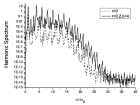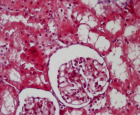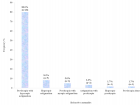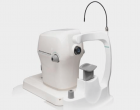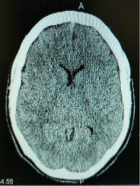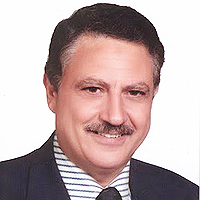Abstract
Review Article
Endocannabinoidome and its role in neurological disorders-A comprehensive update of existing literature
Rajib Dutta*
Published: 03 June, 2021 | Volume 5 - Issue 1 | Pages: 034-047
Medical benefits of cannabis and related compounds is widely known. Discovery of psychotropic plant cannabinoid Δ9-tetrahydrocannabinol have urged researchers to study more about the cannabinoid system and related therapeutics in the field of neurology and medicine. Where activation of cannabinoid receptor type 1 (CB1R) yielded in unwanted and serious side effects, discovery of cannabinoid receptor type 2 (CB2R) and its ligands gave a new hope. Till now there is limited success in this field because of complex expanded endocannabinoid system comprising of receptors, ligands and enzymes. In this review we will update about the role of endocannabinoidome relevant to neurological disorders.
Read Full Article HTML DOI: 10.29328/journal.jnnd.1001049 Cite this Article Read Full Article PDF
Keywords:
Cannabinoid; CB1; CB2; Receptors; Neurological disorders
References
- Alexander SP. Therapeutic potential of cannabis related drugs. Prog. Neuropsychopharmacol. Biol Psychiatry. 2016; 64: 157–166. PubMed: https://pubmed.ncbi.nlm.nih.gov/26216862/
- Plasse TF. Clinical use of dronabinol. J Clin Oncol. 2016; 9: 2079–2080. PubMed: https://pubmed.ncbi.nlm.nih.gov/1658243/b
- Novotna A, Mares J, Ratcliffe S, Novakova I, Vachova M, et al. A randomized, double- blind, placebo- controlled, parallel- group, enriched- design study of nabiximols* (Sativex®), as add- on therapy, in subjects with refractory spasticity caused by multiple sclerosis. Eur J Neurol. 2011; 18: 1122–1131. PubMed: https://pubmed.ncbi.nlm.nih.gov/21362108/
- Keating GM. Delta-9-tetrahydrocannabinol/ cannabidiol oromucosal spray (Sativex®): a review in multiple sclerosis- related spasticity. Drugs. 2017; 77: 563–574. PubMed: https://pubmed.ncbi.nlm.nih.gov/28293911/
- Mechoulam R, Shvo Y. The structure of cannabidiol. Tetrahedron. 1963; 19: 2073–2078. PubMed: https://pubmed.ncbi.nlm.nih.gov/5879214/
- Matsuda LA, Lolait SJ, Brownstein MJ, Young AC, Bonner TI, et al. Structure of a cannabinoid receptor and functional expression of the cloned cDNA. Nature. 1990; 346: 561–564. PubMed: https://pubmed.ncbi.nlm.nih.gov/2165569/
- Munro S, Thomas KL, Abu-Shaar M. Molecular characterization of a peripheral receptor for cannabinoids. Nature. 1993; 365: 61–65. PubMed: https://pubmed.ncbi.nlm.nih.gov/7689702/
- Maccarrone M. Missing Pieces to the Endocannabinoid Puzzle. Trends Mol Med. 2020; 26: 263-272. PubMed: https://pubmed.ncbi.nlm.nih.gov/31822395/
- Mazzola C, Micale V, Drago F. Amnesia induced by beta- amyloid fragments is counteracted by cannabinoid CB1 receptor blockade. Eur J Pharmacol. 2003; 47: 219–225. PubMed: https://pubmed.ncbi.nlm.nih.gov/14522360/
- Cerri S, Levandis G, Ambrosi G, Montepeloso E, Antoninetti GF, et al. Neuroprotective potential of adenosine A2A and cannabinoid CB1 receptor antagonists in an animal model of Parkinson disease. J Neuropathol Exp Neurol. 2014; 73: 414–424. PubMed: https://pubmed.ncbi.nlm.nih.gov/24709676/
- Lunn CA. Updating the chemistry and biology of cannabinoid CB2 receptor-specific inverse agonists. Curr Top Med Chem. 2010; 10: 768-778. PubMed: https://pubmed.ncbi.nlm.nih.gov/20370714/
- Lunn CA, Reich EP, Fine JS, Lavey B, Kozlowski JA, et al. Biology and therapeutic potential of cannabinoid CB2receptor inverse agonists. Br J Pharmacol. 2008; 153: 226–239. PubMed: https://pubmed.ncbi.nlm.nih.gov/17906679/
- Nguyen T, Li JX, Thomas BF, Wiley JL, Kenakin TP, et al. Allosteric Modulation: An Alternate Approach Targeting the Cannabinoid CB1 Receptor. Med Res Rev. 2016; 37L 441–474. PubMed: https://pubmed.ncbi.nlm.nih.gov/27879006/
- Di Marzo V. New approaches and challenges to targeting the endocannabinoid system. Nature Rev Drug Discov. 2018; 17: 623-639. PubMed: https://pubmed.ncbi.nlm.nih.gov/30116049/
- Sergio O, Scipioni L, Maccarrone M. Endocannabinoid system and adult neurogenesis: a focused review. Curr Opinion Pharmacol. 2020; 50: 25-32.
- Arturo IF, Fabiana P. Endocannabinoidome. 2018.
- Turner SE, Williams CM, Iversen L, Whalley BJ. Molecular pharmacology of phytocannabinoids. Prog Chem Org Nat Prod. 2017; 103: 61–101. PubMed: https://pubmed.ncbi.nlm.nih.gov/28120231/
- Devinsky O, Marsh E, Friedman D, Thiele E, Laux L, et al. Cannabidiol in patients with treatment- resistant epilepsy: an open- label interventional trial. Lancet Neurol. 2016; 15: 270–278. PubMed: https://pubmed.ncbi.nlm.nih.gov/26724101/
- Devinsky O, Cross JH, Laux L, Marsh E, Miller I, et al. Trial of cannabidiol for drug resistant seizures in the Dravet syndrome. N Engl J Med. 2017; 376: 2011–2020. PubMed: https://pubmed.ncbi.nlm.nih.gov/28538134/
- Benito C, Tolón RM, Castillo AI, Ruiz-Valdepeñas L, Martínez-Orgado JA, et al. beta- Amyloid exacerbates inflammation in astrocytes lacking fatty acid amide hydrolase through a mechanism involving PPAR- alpha, PPAR- gamma and TRPV1, but not CB(1) or CB(2) receptors. Br J Pharmacol. 2012; 166: 1474–1489. PubMed: https://pubmed.ncbi.nlm.nih.gov/22321194/
- Luchicchi A, Lecca S, Carta S, Pillolla G, Muntoni AL, et al. Effects of fatty acid amide hydrolase inhibition on neuronal responses to nicotine, cocaine and morphine in the nucleus accumbens shell and ventral tegmental area: involvement of PPAR- alpha nuclear receptors. Addict Biol. 2010; 15: 277–288. PubMed: https://pubmed.ncbi.nlm.nih.gov/20477753/
- Hansen HS, Rosenkilde MM, Holst JJ, Schwartz TW, et al. GPR119 as a fat sensor. Trends Pharmacol Sci. 2012; 33: 374–381. PubMed: https://pubmed.ncbi.nlm.nih.gov/22560300/
- Kawahara H, Drew GM, Christie MJ, Vaughan CW. Inhibition of fatty acid amide hydrolase unmasks CB1 receptor and TRPV1 channel mediated modulation of glutamatergic synaptic transmission in midbrain periaqueductal grey. Br J Pharmacol. 2011; 163: 1214–1222. PubMed: https://pubmed.ncbi.nlm.nih.gov/21175570/
- Nomura DK, Lombardi DP, Chang JW, Niessen S, Ward AM, et al. Monoacylglycerol lipase exerts dual control over endocannabinoid and fatty acid pathways to support prostate cancer. Chem Biol. 2011; 18: 846–856. PubMed: https://pubmed.ncbi.nlm.nih.gov/21802006/
- Piro JR, Benjamin DI, Duerr JM, Pi Y, Gonzales C, et al. A dysregulated endocannabinoid eicosanoid network supports pathogenesis in a mouse model of Alzheimer’s disease. Cell Rep. 2012; 1: 617–623. PubMed: https://pubmed.ncbi.nlm.nih.gov/22813736/
- Iannotti FA, Di Marzo V, Petrosino S. Endocannabinoids and endocannabinoid-related mediators: Targets, metabolism and role in neurological disorders. Progr Lipid Res. 2016; 62: 107–128. PubMed: https://pubmed.ncbi.nlm.nih.gov/26965148/
- Katona I, Freund TF. Endocannabinoid signaling as a synaptic circuit breaker in neurological disease. Nat Med. 2008; 14: 923–930. PubMed: https://pubmed.ncbi.nlm.nih.gov/18776886/
- Matyas F, Urbán GM, Watanabe M, Mackie K, Zimmer A, et al. Identification of the sites of 2-arachidonoylglycerol synthesis and action imply retrograde endocannabinoid signaling at both GABAergic and glutamatergic synapses in the ventral tegmental area. Neuropharmacology. 2008; 54: 95–107. PubMed: https://pubmed.ncbi.nlm.nih.gov/17655884/
- Wilson RI, Nicoll RA. Endogenous cannabinoids mediate retrograde signalling at hippocampal synapses. Nature. 2001; 410: 588–592. PubMed: https://pubmed.ncbi.nlm.nih.gov/11279497/
- Marinelli S, Pacioni S, Bisogno T, Di Marzo V, Prince DA, et al. The endocannabinoid 2-arachidonoylglycerol is responsible for the slow self- inhibition in neocortical interneurons. J Neurosci. 2008; 28: 13532–13541. PubMed: https://pubmed.ncbi.nlm.nih.gov/19074027/
- Benard G, Massa F, Puente N, Lourenço J, Bellocchio L, et al. Mitochondrial CB(1) receptors regulate neuronal energy metabolism. Nat Neurosci. 2012; 15: 558–564. PubMed: https://pubmed.ncbi.nlm.nih.gov/22388959/
- Hebert-Chatelain E, Desprez T, Serrat R, Bellocchio L, Soria-Gomez E, et al. A cannabinoid link between mitochondria and memory. Nature. 2016; 539: 555–559. PubMed: https://pubmed.ncbi.nlm.nih.gov/27828947/
- Prenderville JA, Kelly ÁM, Downer EJ. The role of cannabinoids in adult neurogenesis. Br J Pharmacol. 2015; 172: 3950–3963. PubMed: https://pubmed.ncbi.nlm.nih.gov/25951750/
- Aymerich MS, Aso E, Abellanas MA, Tolon RM, Ramos JA, et al. Cannabinoid pharmacology/ therapeutics in chronic degenerative disorders affecting the central nervous system. Biochem Pharmacol. 2018; 157: 67–84. PubMed: https://pubmed.ncbi.nlm.nih.gov/30121249/
- Palazuelos J, Ortega Z, Díaz-Alonso J, Guzmán M, Galve-Roperh I. CB2 cannabinoid receptors promote neural progenitor cell proliferation via mTORC1 signaling. J Biol Chem. 2012; 287: 1198–1209. PubMed: https://pubmed.ncbi.nlm.nih.gov/22102284/
- Chung YC, Shin WO, Baek JY, Cho EJ, Baik HH, et al. CB2 receptor activation prevents glial- derived neurotoxic mediator production, BBB leakage and peripheral immune cell infiltration and rescues dopamine neurons in the MPTP model of Parkinson’s disease. Exp Mol Med. 2016; 48: e205. PubMed: https://pubmed.ncbi.nlm.nih.gov/27534533/
- Marchalant Y, Brownjohn PW, Bonnet A, Kleffmann T, Ashton JC. Validating antibodies to the cannabinoid CB2 receptor: antibody sensitivity is not evidence of antibody specificity. J Histochem Cytochem. 2014; 62: 395–404. PubMed: https://pubmed.ncbi.nlm.nih.gov/24670796/
- Soethoudt M, Grether U, Fingerle J, Grim TW, Fezza F, et al. Cannabinoid CB2 receptor ligand profiling reveals biased signalling and off- target activity. Nat Commun. 2017; 8: 13958. PubMed: https://pubmed.ncbi.nlm.nih.gov/28045021/
- Stempel AV, Stumpf A, Zhang HY, Özdoğan T, Pannasch U, et al. Cannabinoid type 2 receptors mediate a cell type- specific plasticity in the hippocampus. Neuron. 2016; 90: 795–809. PubMed: https://pubmed.ncbi.nlm.nih.gov/27133464/
- Cristino L, de Petrocellis L, Pryce G, Baker D, Guglielmotti V, et al. Immunohistochemical localization of cannabinoid type 1 and vanilloid transient receptor potential vanilloid type 1 receptors in the mouse brain. Neuroscience. 2006; 139: 1405–1415. PubMed: https://pubmed.ncbi.nlm.nih.gov/16603318/
- Cristino L, Starowicz K, De Petrocellis L, Morishita J, Ueda N, et al. Immunohistochemical localization of anabolic and catabolic enzymes for anandamide and other putative endovanilloids in the hippocampus and cerebellar cortex of the mouse brain. Neuroscience. 2008; 151: 955–968. PubMed: https://pubmed.ncbi.nlm.nih.gov/18248904/
- Villapol S. Roles of peroxisome proliferator activated receptor gamma on brain and peripheral inflammation. Cell Mol. Neurobiol. 2018; 38: 121–132. PubMed: https://pubmed.ncbi.nlm.nih.gov/28975471/
- Sylantyev S, Jensen TP, Ross RA, Rusakov DA. Cannabinoid- and lysophosphatidyl inositol- sensitive receptor GPR55 boosts neurotransmitter release at central synapses. Proc Natl Acad Sci. USA. 2013; 110: 5193–5198. PubMed: https://pubmed.ncbi.nlm.nih.gov/23472002/
- McHugh D, Wager-Miller J, Page J, Bradshaw HB. siRNA knockdown of GPR18 receptors in BV-2 microglia attenuates N- arachidonoyl glycine- induced cell migration. J Mol Signal. 2012; 7: 10. PubMed: https://pubmed.ncbi.nlm.nih.gov/22834922/
- Crivelaro do Nascimento G, Ferrari DP, Guimaraes FS, Del Bel EA, Bortolanza M, et al. Cannabidiol increases the nociceptive threshold in a preclinical model of Parkinson’s disease. Neuropharmacology. 2019; 163: 107808. PubMed: https://pubmed.ncbi.nlm.nih.gov/31706993/
- Davis MP, Behm B, Mehta Z, Fernandez C. The Potential Benefits of Palmitoylethanolamide in Palliation: A Qualitative Systematic Review. Am J Hosp Palliat Med. 2019; 36: 1134-1154. PubMed: https://pubmed.ncbi.nlm.nih.gov/31113223/
- Martínez-Pinilla E, Aguinaga D, Navarro G, Rico AJ, Oyarzábal J, et al. Targeting CB1 and GPR55 Endocannabinoid Receptors as a Potential Neuroprotective Approach for Parkinson’s Disease. Mole Neurobiol. 2019; 56: 5900-5910. PubMed: https://pubmed.ncbi.nlm.nih.gov/30687889/
- Chagas MH, Zuardi AW, Tumas V, Pena-Pereira MA, Sobreira ET, et al. Effects of cannabidiol in the treatment of patients with Parkinson’s disease: an exploratory double- blind trial. J Psychopharmacol. 2014; 28: 1088–1098. PubMed: https://pubmed.ncbi.nlm.nih.gov/25237116/
- Sieradzan KA, Fox SH, Hill M, Dick JP, Crossman AR, et al. Cannabinoids reduce levodopa induced dyskinesia in Parkinson’s disease: a pilot study. Neurology. 2001; 57: 2108–2111. PubMed: https://pubmed.ncbi.nlm.nih.gov/11739835/
- Brotini S, Schievano C, Guidi L. Ultramicronized palmitoylethanolamide: an efficacious adjuvant therapy for Parkinson’s disease. CNS Neurol Disord Drug Targets. 2017; 16: 705–713. PubMed: https://pubmed.ncbi.nlm.nih.gov/28325153/
- Ruthirakuhan M, Herrmann N, Andreazza AC, Verhoeff NP, Gallagher D, et al. Agitation, Oxidative Stress, and Cytokines in Alzheimer Disease: Biomarker Analyses From a Clinical Trial With Nabilone for Agitation. J Geriatric Psychiatry Neurol. 2019; 2020; 33: 175-184. PubMed: https://pubmed.ncbi.nlm.nih.gov/31547752/
- Franco R, Reyes‐Resina I, Aguinaga D, Lillo A, Jiménez J, Raïch I, et al. Potentiation of cannabinoid signaling in microglia by adenosine A 2A receptor antagonists. Glia. 2019; 67: 2410-2423. PubMed: https://pubmed.ncbi.nlm.nih.gov/31429130/
- Montanari S, Mahmoud AM, Pruccoli L, Rabbito A, Naldi M, et al. Discovery of novel benzofuran-based compounds with neuroprotective and immunomodulatory properties for Alzheimer’s disease treatment. Eur J Med Chem. 2019. PubMed: https://pubmed.ncbi.nlm.nih.gov/31185414/
- Balleza-Tapia H, Crux S, Andrade-Talavera Y, Dolz-Gaiton P, Papadia D, et al. TrpV1 receptor activation rescues neuronal function and network gamma oscillations from Aβ-induced impairment in mouse hippocampus in vitro. Elife, 2018; 7: e37703. PubMed: https://pubmed.ncbi.nlm.nih.gov/30417826/
- Aparicio N, Grande MT, Ruiz de Martín Esteban S, López A, Ruiz-Pérez G, et al. Role of Interleukin 1-Beta In The Inflammatory Response In A Fatty Acid Amide Hydrolase-Knockout Mouse Model of Alzheimer’s Disease. Biochem Pharmacol. 2018; 157: 202-209. PubMed: https://pubmed.ncbi.nlm.nih.gov/30195729/
- Talarico G, Trebbastoni A, Bruno G, de Lena C. Modulation of the Cannabinoid System: A New Perspective for the Treatment of the Alzheimer’s Disease. Curr Neuropharmacol. 2019; 17: 176-183. PubMed: https://pubmed.ncbi.nlm.nih.gov/29962346/
- Takkinen JS, López-Picón FR, Kirjavainen AK, Pihlaja R, Snellman A, et al. 18 F]FMPEP- d 2 PET imaging shows age- and genotype-dependent impairments in the availability of cannabinoid receptor 1 in a mouse model of Alzheimer’s disease. Neurobiol Aging. 2018; 69: 199–208. PubMed: https://pubmed.ncbi.nlm.nih.gov/29909177/
- Schmöle AC, Lundt R, Toporowski G, Hansen JN, Beins E, et al. Cannabinoid Receptor 2-Deficiency Ameliorates Disease Symptoms in a Mouse Model with Alzheimer’s Disease-Like Pathology. J Alzheimers Dis. 2018; 64: 379–392. PubMed: https://pubmed.ncbi.nlm.nih.gov/29865078/
- Llorente-Ovejero A, Manuel I, Lombardero L, Giralt MT, Ledent C, et al. Endocannabinoid and Muscarinic Signaling Crosstalk in the 3xTg-AD Mouse Model of Alzheimer’s Disease. J Alzheimers Dis. 2018; 64: 117–136. PubMed: https://pubmed.ncbi.nlm.nih.gov/29865071/
- Passmore MJ. The cannabinoid receptor agonist nabilone for the treatment of dementia- related agitation. Int J Geriatr Psychiatry. 2008; 23: 116–117. PubMed: https://pubmed.ncbi.nlm.nih.gov/18081000/
- van den Elsen GAH. Ahmed AIA, Verkes RJ, Kramers C, Feuth T, et al. Tetrahydrocannabinol for neuropsychiatric symptoms in dementia: a randomized controlled trial. Neurology. 2015; 84: 2338–2346. PubMed: https://pubmed.ncbi.nlm.nih.gov/25972490/
- van den Elsen GAH, Ahmed AIA, Verkes RJ, Feuth T, van der Marck MA. et al. Tetrahydrocannabinol in behavioral disturbances in dementia: a crossover randomized controlled trial. Am J Geriatr Psychiatry. 2015; 23: 1214–1224. PubMed: https://pubmed.ncbi.nlm.nih.gov/26560511/
- van den Elsen GAH, Tobben L, Ahmed AI, Verkes RJ, Kramers C, et al. Effects of tetrahydrocannabinol on balance and gait in patients with dementia: a randomised controlled crossover trial. J Psychopharmacol. 2017; 31: 184–191. PubMed: https://pubmed.ncbi.nlm.nih.gov/27624148/
- Smith‐Dijak AI, Sepers MD, Raymond LA. Alterations in Synaptic Function and Plasticity in Huntington Disease. J Neurochem. 2019; 150: 346-365. PubMed: https://pubmed.ncbi.nlm.nih.gov/31095731/
- Laprairie RB, Bagher AM, Rourke JL, Zrein A, Cairns EA, et al. Positive allosteric modulation of the type 1 cannabinoid receptor reduces the signs and symptoms of Huntington’s disease in the R6/2 mouse model. Neuropharmacology. 2019; 151: 1-12. PubMed: https://pubmed.ncbi.nlm.nih.gov/30940536/
- Covey DP, Dantrassy HM, Yohn SE, Castro A, Conn PJ, et al. Inhibition of endocannabinoid degradation rectifies motivational and dopaminergic deficits in the Q175 mouse model of Huntington’s disease. Neuropsychopharmacology. 2018; 43: 2056–2063. PubMed: https://pubmed.ncbi.nlm.nih.gov/29925886/
- Bagher AM, Laprairie RB, Kelly MEM, Denovan-Wright EM. Methods to Quantify Cell Signaling and GPCR Receptor Ligand Bias: Characterization of Drugs that Target the Endocannabinoid Receptors in Huntington’s Disease. Methods Mol Biol. 2018; 549–571. PubMed: https://pubmed.ncbi.nlm.nih.gov/29856035/
- Sepers MD, Smith-Dijak A, LeDue J, Kolodziejczyk K, Mackie K, et al. Endocannabinoid-Specific Impairment in Synaptic Plasticity in Striatum of Huntington’s Disease Mouse Model. J Neurosci. 2017; 38: 544–554. PubMed: https://pubmed.ncbi.nlm.nih.gov/29192125/
- Battista N, Bari M, Tarditi A, Mariotti C, Bachoud-Lévi AC, Zuccato C, et al. Severe deficiency of the fatty acid amide hydrolase (FAAH) activity segregates with the Huntington’s disease mutation in peripheral lymphocytes. Neurobiol Dis. 2007; 27: 108–116. PubMed: https://pubmed.ncbi.nlm.nih.gov/17553686/
- Lopez-Sendon M, Caldentey JC, Cubillo PT, Romero CR, Ribas GG, et al. A double- blind, randomized, cross- over, placebo- controlled, pilot trialwith Sativex in Huntington’s disease. J Neurol. 2016; 263: 1390–1400. PubMed: https://pubmed.ncbi.nlm.nih.gov/27159993/
- Saft C, von Hein SM, Lücke T, Thiels C, Peball M, et al. Cannabinoids for treatment of dystonia in Huntington’s disease. J Huntingt Dis. 2018; 7: 167–173. PubMed: https://pubmed.ncbi.nlm.nih.gov/29562549/
- Consroe P, Laguna J, Allender J, Snider S, Stern L, et al. Controlled clinical trial of cannabidiol in Huntington’s disease. Pharmacol Biochem Behav. 1991; 40: 701–708. PubMed: https://pubmed.ncbi.nlm.nih.gov/1839644/
- Curtis A, Mitchell I, Patel S, Ives N, Rickards H. A pilot study using nabilone for symptomatic treatment in Huntington’s disease. Mov Disord. 2009; 24: 2254–2259. PubMed: https://pubmed.ncbi.nlm.nih.gov/19845035/
- Armstrong MJ, Miyasaki JM. Evidence-based guideline: Pharmacologic treatment of chorea in Huntington disease: Report of the Guideline Development Subcommittee of the American Academy of Neurology. Neurology. 2012; 79: 597–603. PubMed: https://pubmed.ncbi.nlm.nih.gov/22815556/
- Curtis A, Rickards H. Nabilone Could Treat Chorea and Irritability in Huntington’s Disease. J Neuropsychiatry Clin Neurosci. 2006; 18: 553–554. PubMed: https://pubmed.ncbi.nlm.nih.gov/17135385/
- Muller-Vahl KR, Schneider U, Emrich HM. Nabilone increases choreatic movements in Huntington’s disease. Mov Disord. 1999; 14: 1038–1040. PubMed: https://pubmed.ncbi.nlm.nih.gov/10584686/
- Eger M, Bader M, Bree D, Hadar R, Nemerovski A, et al. Bone Anabolic Response in the Calvaria Following Mild Traumatic Brain Injury is Mediated by the Cannabinoid-1 Receptor. Sci Rep. 2019; 9: 16196. PubMed: https://pubmed.ncbi.nlm.nih.gov/31700010/
- Honn KV, Zeldin DC. The Role of Bioactive Lipids in Cancer, Inflammation and Related Diseases. Adv Experimen Med Biol. 2019.
- Fucich EA, Mayeux JP, McGinn MA, Gilpin NW, Edwards S, et al. A Novel Role for the Endocannabinoid System in Ameliorating Motivation for Alcohol Drinking and Negative Behavioral Affect Following Traumatic Brain Injury in Rats. J Neurotrauma. 2019; : 36: 1847-1855. PubMed: https://pubmed.ncbi.nlm.nih.gov/30638118/
- Xu X, Jiang S, Xu E, Wu X, Zhao R. Inhibition of CB1 receptor ameliorates spatial learning and memory impairment in mice with traumatic brain injury. Neurosci Lett. 2019; 696: 127-131. PubMed: https://pubmed.ncbi.nlm.nih.gov/30576711/
- Magid L, Heymann S, Elgali M, Avram L, Cohen Y, et al. The Role of CB2 Receptor in the Recovery of Mice after Traumatic Brain Injury. J Neurotrauma. 2018; 36: 1836-1846. PubMed: https://pubmed.ncbi.nlm.nih.gov/30489198/
- Piro JR, Suidan GL, Quan J, Pi Y, O’Neill SM, et al. Inhibition of 2-AG hydrolysis differentially regulates blood brain barrier permeability after injury. J Neuroinflammation. 2018; 15.
- Braun M, Khan ZT, Khan MB, Kumar M, Ward A, et al. Selective activation of cannabinoid receptor-2 reduces neuroinflammation after traumatic brain injury via alternative macrophage polarization. Brain Behav Immun. 2017; 68: 224–237. PubMed: https://pubmed.ncbi.nlm.nih.gov/29079445/
- Panikashvili D, Simeonidou C, Ben-Shabat S, Hanus L, Breuer A, et al. An endogenous cannabinoid (2-AG) is neuroprotective after brain injury. Nature. 2001; 413: 527–531. PubMed: https://pubmed.ncbi.nlm.nih.gov/11586361/
- Panikashvili D, Shein NA, Mechoulam R, Trembovler V, Kohen R, et al. The endocannabinoid 2-AG protects the blood- brain barrier after closed head injury and inhibits mRNA expression of proinflammatory cytokines. Neurobiol Dis. 2006; 22: 257–264. PubMed: https://pubmed.ncbi.nlm.nih.gov/16364651/
- Mayeux J, Katz P, Edwards S, Middleton JW, Molina PE, et al. Inhibition of endocannabinoid degradation improves outcomes from mild traumatic brain injury: a mechanistic role for synaptic hyperexcitability. J Neurotrauma. 2017; 34: 436–443. PubMed: https://pubmed.ncbi.nlm.nih.gov/27189876/
- Katz PS, Sulzer JK, Impastato RA, Teng SX, Rogers EK, et al. Endocannabinoid degradation inhibition improves neurobehavioral function, bloodbrain barrier integrity, and neuroinflammation following mild traumatic brain injury. J Neurotrauma. 2015; 32: 297–306. PubMed: https://pubmed.ncbi.nlm.nih.gov/25166905/
- Ahmad A, Crupi R, Impellizzeri D, Campolo M, Marino A, et al. Administration of palmitoylethanolamide (PEA) protects the neurovascular unit and reduces secondary injury after Traumatic brain injury in mice. Brain Behav. Immun. 2012; 26: 1310–1321. PubMed: https://pubmed.ncbi.nlm.nih.gov/22884901/
- Cohen- Yeshurun A, Willner D, Trembovler V, Alexandrovich A, Mechoulam R, et al. N- arachidonoyl-L- serine (AraS) possesses proneurogenic properties in vitro and in vivo after traumatic brain injury. J Cereb Blood Flow Metab. 2013; 33: 1242–1250. PubMed: https://pubmed.ncbi.nlm.nih.gov/23695434/
- Feigenbaum JJ, Bergmann F, Richmond SA, Mechoulam R, Nadler V, et al. Nonpsychotropic cannabinoid acts as a functional N-methyl-D-aspartate receptor blocker. Proc Natl Acad Sci. USA. 1989; 86: 9584–9587. PubMed: https://www.ncbi.nlm.nih.gov/pmc/articles/PMC298542/
- Maas AI, Murray G, Henney H, Kassem N, Legrand V, et al. Efficacy and safety of dexanabinol in severe traumatic brain injury: results of a phase III randomised, placebo- controlled, clinical trial. Lancet Neurol. 2006; 5: 38–45. PubMed: https://pubmed.ncbi.nlm.nih.gov/16361021/
- Laila A, Iglesias LP, De Oliveira AC, Moraes MFD, Moreira FA. Exploiting cannabinoid and vanilloid mechanisms for epilepsy treatment. Epilepsy Behavior. 2019; 106832. PubMed: https://pubmed.ncbi.nlm.nih.gov/31839498/
- Cheung KAK, Peiris H, Wallace G, Holland OJ, Mitchell MD. The Interplay between the Endocannabinoid System, Epilepsy and Cannabinoids. Int J Mole Sci. 2019; 20: 6079. PubMed: https://pubmed.ncbi.nlm.nih.gov/31810321/
- Shapiro L, Wong JC, Escayg A. Reduced cannabinoid 2 receptor activity increases susceptibility to induced seizures in mice. Epilepsia. 2019; 60: 2359-2369. PubMed: https://pubmed.ncbi.nlm.nih.gov/31758544/
- Vinogradova LV, van Rijn CM. Long- term disease- modifying effect of the endocannabinoid agonist WIN55,212-2 in a rat model of audiogenic epilepsy. Pharmacol Rep. 2015; 67: 501–503. PubMed: https://pubmed.ncbi.nlm.nih.gov/25933961/
- Di Maio R, Cannon JR, Greenamyre JT. Poststatus epilepticus treatment with the cannabinoid agonist WIN 55,212-2 prevents chronic epileptic hippocampal damage in rats. Neurobiol Dis. 2015; 73: 356–365. PubMed: https://pubmed.ncbi.nlm.nih.gov/25447228/
- Bhaskaran MD, Smith BN. Cannabinoid mediated inhibition of recurrent excitatory circuitry in the dentate gyrus in a mouse model of temporal lobe epilepsy. Plos One. 2010; 5: e10683. PubMed: https://pubmed.ncbi.nlm.nih.gov/20498848/
- Wallace MJ, Blair RE, Falenski KW, Martin BR, DeLorenzo RJ. The endogenous cannabinoid system regulates seizure frequency and duration in a model of temporal lobe epilepsy. J Pharmacol Exp Ther. 2003; 307: 129–137. PubMed: https://pubmed.ncbi.nlm.nih.gov/12954810/
- Vinogradova LV, Shatskova AB, van Rijn CM. Pro- epileptic effects of the cannabinoid receptor antagonist SR141716 in a model of audiogenic epilepsy. Epilepsy Res. 2011; 96: 250–256. PubMed: https://pubmed.ncbi.nlm.nih.gov/21733658/
- Marsicano G, Goodenough S, Monory K, Hermann H, Eder M, et al. CB1 cannabinoid receptors and on- demand defense against excitotoxicity. Science. 2003; 302: 84–88. PubMed: https://pubmed.ncbi.nlm.nih.gov/14526074/
- Vilela LR, Medeiros DC, Rezende GHS, de Oliveira ACP, Moraes MFD, et al. Effects of cannabinoids and endocannabinoid hydrolysis inhibition on pentylenetetrazole- induced seizure and electroencephalographic activity in rats. Epilepsy Res. 2013; 104; 195–202. PubMed: https://pubmed.ncbi.nlm.nih.gov/23352737/
- Shubina L, Aliev R, Kitchigina V. Attenuation of kainic acid- induced status epilepticus by inhibition of endocannabinoid transport and degradation in guinea pigs. Epilepsy Res. 2015; 111: 33–44. PubMed: https://pubmed.ncbi.nlm.nih.gov/25769371/
- Jones NA, Hill AJ, Smith J, Bevan SA, Williams CM, et al. Cannabidiol displays antiepileptiform and antiseizure properties in vitro and in vivo. J Pharmacol Exp Ther. 2010; 332: 569–577. PubMed: https://pubmed.ncbi.nlm.nih.gov/19906779/
- Jones NA, Glyn SE, Akiyama S, Hill TDM, Hill AJ, et al. Cannabidiol exerts anti- convulsant effects in animal models of temporal lobe and partial seizures. Seizure. 2012; 21: 344–352. PubMed: https://pubmed.ncbi.nlm.nih.gov/22520455/
- Khan AA, Shekh-Ahmad T, Khalil A, Walker MC, Ali AA, et al. Cannabidiol exerts antiepileptic effects by restoring hippocampal interneuron functions in a temporal lobe epilepsy model. Br J Pharmacol. 2018; 175: 2097–2115. PubMed: https://pubmed.ncbi.nlm.nih.gov/29574880/
- Thiele EA, Marsh ED, French JA, Mazurkiewicz-Beldzinska M, Benbadis SR, et al. Cannabidiol in patients with seizures associated with Lennox- Gastaut syndrome (GWPCARE4): a randomised, double- blind, placebo-controlled phase 3 trial. Lancet. 2018; 391: 1085–1096. PubMed: https://pubmed.ncbi.nlm.nih.gov/29395273/
- Devinsky O, Verducci C, Thiele EA, Laux LC, Patel AD, et al. Open- label use of highly purified CBD (Epidiolex®) in patients with CDKL5 deficiency disorder and Aicardi, Dup15q, and Doose syndromes. Epilepsy Behav. 2018; 86: 131–137. PubMed: https://pubmed.ncbi.nlm.nih.gov/30006259/
- Gofshteyn JS. Cannabidiol as a potential treatment for febrile infection- related epilepsy syndrome (FIRES) in the acute and chronic phases. J Child Neurol. 2017; 32: 35–40. PubMed: https://pubmed.ncbi.nlm.nih.gov/27655472/
- Abi-Jaoude E, Chen L, Cheung P, Bhikram T, Sandor P. Preliminary evidence on cannabis effectiveness and tolerability for adults with Tourette syndrome. J Neuropsychiatry Clin Neurosci. 2017; 29: 391–400. PubMed: https://pubmed.ncbi.nlm.nih.gov/28464701/
- Muller-Vahl KR, Schneider U, Kolbe H, Emrich HM. Treatment of Tourette’s syndrome with delta-9-tetrahydrocannabinol. Am J Psychiatry. 1999; 156: 495. PubMed: https://pubmed.ncbi.nlm.nih.gov/10080574/
- Muller-Vahl KR. Treatment of Tourette syndrome with cannabinoids. Behav Neurol. 2013; 27: 119–124. PubMed: https://pubmed.ncbi.nlm.nih.gov/23187140/
- Kanaan A, Jakubovski E, Müller-Vahl K. Significant Tic Reduction in An Otherwise Treatment-Resistant Patient with Gilles de la Tourette Syndrome Following Treatment with Nabiximols. Brain Sci. 2017; 7: 47. PubMed: https://pubmed.ncbi.nlm.nih.gov/28445405/
- Jiang M, van der Stelt M. Activity-Based Protein Profiling Delivers Selective Drug Candidate ABX-1431, a Monoacylglycerol Lipase Inhibitor, To Control Lipid Metabolism in Neurological Disorders. J Med Chem. 2018; 61: 9059-9061. PubMed: https://pubmed.ncbi.nlm.nih.gov/30354159/
- Hohmann U, Pelzer M, Kleine J, Hohmann T, Ghadban C, et al. Opposite Effects of Neuroprotective Cannabinoids, Palmitoylethanolamide, and 2-Arachidonoylglycerol on Function and Morphology of Microglia. Front Neurosci. 2019; 13: 1180. PubMed: https://pubmed.ncbi.nlm.nih.gov/31787870/
- Rajah G, Kolb B, Saber H, Fadel H. The endocannabinoid system and stroke: A focused review. Brain Circulation. 2019; 5: 1-7. PubMed: https://pubmed.ncbi.nlm.nih.gov/31001593/
- Luo D, Zhang Y, Yuan X, Pan Y, Yang L, et al. Oleoylethanolamide inhibits glial activation via moudulating PPARα and promotes motor function recovery after brain ischemia. Pharmacological Res. 2019; 141: 530-540. PubMed: https://pubmed.ncbi.nlm.nih.gov/30660821/
- Yang X, Xu L, Zhou J, Ge Y, Wu S, et al. Integration of phospholipid-complex nanocarrier assembly with endogenous N-oleoylethanolamine for efficient stroke therapy. J Nanobiotechnol. 2019; 17: 8. PubMed: https://pubmed.ncbi.nlm.nih.gov/30660200/
- Zhou J, Noori H, Burkovskiy I, Lafreniere J, Kelly M, et al. Modulation of the Endocannabinoid System Following Central Nervous System Injury. Int J Mole Sci. 2019; 20: 388. PubMed: https://pubmed.ncbi.nlm.nih.gov/30658442/
- Ilyasov AA, Milligan CE, Pharr EP, Howlett AC. The Endocannabinoid System and Oligodendrocytes in Health and Disease. Front Neurosci. 2018; 12; 733. PubMed: https://pubmed.ncbi.nlm.nih.gov/30416422/
- Rodríguez-Muñoz M, Onetti Y, Cortés-Montero E, Garzón J, Sánchez-Blázquez P. Cannabidiol enhances morphine antinociception, diminishes NMDA-mediated seizures and reduces stroke damage via the sigma 1 receptor. Molecular Brain. 2018; 11: 51. PubMed: https://pubmed.ncbi.nlm.nih.gov/30223868/
- Sagredo O, Palazuelos J, Gutierrez-Rodriguez A, Satta V, Galve-Roperh I, et al. Cannabinoid signalling in the immature brain: encephalopathies and neurodevelopmental disorders. Biochem Pharmacol. 2018; 157: 85-96. PubMed: https://pubmed.ncbi.nlm.nih.gov/30118663/
- Holubiec MI, Romero JI, Suárez J, Portavella M, Fernández-Espejo E, et al. Palmitoylethanolamide prevents neuroinflammation, reduces astrogliosis and preserves recognition and spatial memory following induction of neonatal anoxia-ischemia. Psychopharmacology. 2018; 235: 2929-2945. PubMed: https://pubmed.ncbi.nlm.nih.gov/30058012/
- Chi OZ, Barsoum S, Grayson J, Hunter C, Liu X, et al. Effects of cannabinoid receptor agonist WIN 55,212-2 on blood- brain barrier disruption in focal cerebral ischemia in rats. Pharmacology. 2012; 89: 333–338. PubMed: https://pubmed.ncbi.nlm.nih.gov/22678129/
- Mauler F, Hinz V, Augstein KH, Fassbender M, Horváth E. Neuroprotective and brain edema reducing efficacy of the novel cannabinoid receptor agonist BAY 38-7271. Brain Res. 2003; 989: 99–111. PubMed: https://pubmed.ncbi.nlm.nih.gov/14519516/
- Hayakawa K, Mishima K, Nozako M, Hazekawa M, Ogata A, et al. Delta 9-tetrahydrocannabinol (delta9-THC) prevents cerebral infarction via hypothalamic- independent hypothermia. Life Sci. 2007; 80: 1466–1471. PubMed: https://pubmed.ncbi.nlm.nih.gov/17289082/
- Parmentier-Batteur S, Jin K, Mao XO, Xie L, Greenberg DA. Increased severity of stroke in CB1 cannabinoid receptor knock- out mice. J Neurosci. 2002; 22: 9771–9775. PubMed: https://pubmed.ncbi.nlm.nih.gov/12427832/
- Muthian S, Rademacher DJ, Roelke CT, Gross GJ, Hillard CJ. Anandamide content is increased and CB1 cannabinoid receptor blockade is protective during transient, focal cerebral ischemia. Neuroscience. 2004; 129: 743–750. PubMed: https://pubmed.ncbi.nlm.nih.gov/15541895/
- Zarruk JG, Fernández-López D, García-Yébenes I, García-Gutiérrez MS, Vivancos J, et al. Cannabinoid type 2 receptor activation downregulates stroke- induced classic and alternative brain macrophage/microglial activation concomitant to neuroprotection. Stroke. 2012; 43: 211–219. PubMed: https://pubmed.ncbi.nlm.nih.gov/22020035/
- Zhang M, Adler MW, Abood ME, Ganea D, Jallo J, et al. CB2 receptor activation attenuates microcirculatory dysfunction during cerebral ischemic/ reperfusion injury. Microvasc Res. 2009; 78: 86–94. PubMed: https://pubmed.ncbi.nlm.nih.gov/19332079/
- Alvarez FJ, Lafuente H, Rey-Santano MC, Mielgo VE, Gastiasoro E, et al. Neuroprotective effects of the nonpsychoactive cannabinoid cannabidiol in hypoxicischemic newborn piglets. Pediatr Res. 2008; 64: 653–658. PubMed: https://pubmed.ncbi.nlm.nih.gov/18679164/
- Lafuente H, Alvarez FJ, Pazos MR, Alvarez A, Rey-Santano MC, et al. Cannabidiol reduces brain damage and improves functional recovery after acute hypoxia ischemia in newborn pigs. Pediatr Res. 2011; 70; 272–277. PubMed: https://pubmed.ncbi.nlm.nih.gov/21654550/
- Castillo A, Tolón MR, Fernández-Ruiz J, Romero J, Martinez-Orgado J. The neuroprotective effect of cannabidiol in an in vitro model of newborn hypoxicischemic brain damage in mice is mediated by CB(2) and adenosine receptors. Neurobiol Dis. 2010; 37: 434–440. PubMed: https://pubmed.ncbi.nlm.nih.gov/19900555/
- Marinelli L, Maurizio Balestrino, Laura Mori, Luca Puce, Gian Marco Rosa, et al. A randomised controlled cross- over double- blind pilot study protocol on THC: CBD oromucosal spray efficacy as an add- on therapy for post- stroke spasticity. BMJ Open. 2017; 7: e016843. PubMed: https://pubmed.ncbi.nlm.nih.gov/28882919/
- Caltagirone C, Carlo Cisari, Carlo Schievano, Rosanna Di Paola, Marika Cordaro, et al. Co-ultramicronized palmitoylethanolamide/luteolin in the treatment of cerebral ischemia: from rodent to man. Transl Stroke Res. 2016; 7: 54-69. PubMed: https://pubmed.ncbi.nlm.nih.gov/26706245/
- Espejo-Porras F, Fernández-Ruiz J, de Lago E. Analysis of endocannabinoid receptors and enzymes in the post-mortem motor cortex and spinal cord of amyotrophic lateral sclerosis patients. Amyotrophic Lateral Scler Frontotemporal Degener. 2018; 19: 377-386. PubMed: https://pubmed.ncbi.nlm.nih.gov/29334787/
- Pasquarelli N, Engelskirchen M, Hanselmann J, Endres S, Porazik C, et al. Evaluation of monoacylglycerol lipase as a therapeutic target in a transgenic mouse model of ALS. Neuropharmacology. 2017; 124: 157-169. PubMed: https://pubmed.ncbi.nlm.nih.gov/28373073/
- Fernández-Trapero M, Espejo-Porras F, Rodríguez-Cueto C, Coates JR, Pérez-Díaz C, et al. Upregulation of CB2receptors in reactive astrocytes in canine degenerative myelopathy, a disease model of amyotrophic lateral sclerosis. Dis Model Mech. 2017; 10: 551-558. PubMed: https://pubmed.ncbi.nlm.nih.gov/28069688/
- Zhao P, Ignacio S, Beattie EC, Abood ME. Altered presymptomatic AMPA and cannabinoid receptor trafficking in motor neurons of ALS model mice: implications for excitotoxicity. Eur J Neurosci. 2008; 27: 572-579. PubMed: https://pubmed.ncbi.nlm.nih.gov/18279310/
- Shoemaker JL, Kathryn A Seely, Ronald L Reed, John P Crow, Paul L Prather. The CB2 cannabinoid agonist AM-1241 prolongs survival in a transgenic mouse model of amyotrophic lateral sclerosis when initiated at symptom onset. J Neurochem. 2007; 101: 87-98. PubMed: https://pubmed.ncbi.nlm.nih.gov/17241118/
- Espejo- Porras F, Fabiana Piscitelli, Roberta Verde, José A Ramos, Vincenzo Di Marzo, et al. Changes in the endocannabinoid signaling system in CNS structures of TDP-43 transgenic mice: relevance for a neuroprotective therapy in TDP-43-related disorders. J Neuroimmune Pharmacol. 2015; 10: 233-244. PubMed: https://pubmed.ncbi.nlm.nih.gov/25819934/
- Espejo- Porras F, Fernandez- Ruiz J, de Lago E. Analysis of endocannabinoid receptors and enzymes in the post- mortem motor cortex and spinal cord of amyotrophic lateral sclerosis patients. Amyotroph Lateral Scler Frontotemporal Degener. 2018; 19: 377-386. PubMed: https://pubmed.ncbi.nlm.nih.gov/29334787/
- Witting A, Patrick Weydt, Soyon Hong, Michel Kliot, Thomas Moller, et al. Endocannabinoids accumulate in spinal cord of SOD1 G93A transgenic mice. J Neurochem. 2004; 89: 1555-1557. PubMed: https://pubmed.ncbi.nlm.nih.gov/15189359/
- Bilsland LG, James RT Dick, Pryce G, Petrosino S, Di Marzo V, et al. Increasing cannabinoid levels by pharmacological and genetic manipulation delay disease progression in SOD1 mice. FASEB J. 2006; 20: 1003–1005. PubMed: https://pubmed.ncbi.nlm.nih.gov/16571781/
- Pasquarelli N, Engelskirchen M, Hanselmann J, Endres S, Porazik C, et al. Evaluation of monoacylglycerol lipase as a therapeutic target in a transgenic mouse model of ALS. Neuropharmacology. 2017; 124: 157-169. PubMed: https://pubmed.ncbi.nlm.nih.gov/28373073/
- Rajan TS, Scionti D, Diomede F, Grassi G, Pollastro F, et al. Gingival stromal cells as an in vitro model: cannabidiol modulates genes linked with amyotrophic lateral sclerosis. J Cell Biochem. 2017; 118: 819-828. PubMed: https://pubmed.ncbi.nlm.nih.gov/27714895/
- Moreno-Martet M, Espejo-Porras F, Fernández-Ruiz J, de Lago E. Changes in endocannabinoid receptors and enzymes in the spinal cord of SOD1(G93A) transgenic mice and evaluation of a Sativex®-like combination of phytocannabinoids: interest for future therapies in amyotrophic lateral sclerosis. CNS Neurosci Ther. 2014; 20: 809-815. PubMed: https://pubmed.ncbi.nlm.nih.gov/24703394/
- Palma E, Reyes-Ruiz JM, Lopergolo D, Roseti C, Bertollini C, et al. Acetylcholine receptors from human muscle as pharmacological targets for ALS therapy. Proc Natl Acad Sci USA. 2016; 113: 3060-3065. PubMed: https://pubmed.ncbi.nlm.nih.gov/26929355/
- Clemente S. Amyotrophic lateral sclerosis treatment with ultramicronized palmitoylethanolamide: a case report. CNS Neurol Disord Drug Targets. 2012; 11: 933-936. PubMed: https://pubmed.ncbi.nlm.nih.gov/22998138/
- Stampanoni Bassi M, Gentile A, Iezzi E, Zagaglia S, Musella A, et al. Transient Receptor Potential Vanilloid 1 Modulates Central Inflammation in Multiple Sclerosis. Front Neurol. 2019; 10: 30. PubMed: https://pubmed.ncbi.nlm.nih.gov/30761069/
- Mecha M, Yanguas-Casás N, Feliú AA, Mestre L, Carrillo-Salinas F, et al. The endocannabinoid 2-AG enhances spontaneous remyelination by targeting microglia. Brain, Behav Immun. 2019; 77: 110-126. PubMed: https://pubmed.ncbi.nlm.nih.gov/30582962/
- Baker D, G Pryce, J L Croxford, P Brown, R G Pertwee, et al. Cannabinoids control spasticity and tremor in a multiple sclerosis model. Nature. 2000; 404: 84-87. PubMed: https://pubmed.ncbi.nlm.nih.gov/10716447/
- Baker D, G Pryce, J L Croxford, P Brown, R G Pertwee, et al. Endocannabinoids control spasticity in a multiple sclerosis model. FASEB J. 2001; 15: 300-302. PubMed: https://pubmed.ncbi.nlm.nih.gov/11156943/
- Hilliard A, C Stott, S Wright, G Guy, G Pryce, et al. Evaluation of the effects of Sativex (THC BDS: CBD BDS) on inhibition of spasticity in a chronic relapsing experimental allergic autoimmune encephalomyelitis: a model of multiple sclerosis. ISRN Neurol. 2012; 2012: 802649. PubMed: https://pubmed.ncbi.nlm.nih.gov/22928118/
- Giacoppo S, Bramanti P, Mazzon E. Sativex in the management of multiple sclerosis- related spasticity: an overview of the last decade of clinical evaluation. Mult Scler Relat Disord. 2017; 17: 22-31. PubMed: https://pubmed.ncbi.nlm.nih.gov/29055461/
- Markova J, Ute Essner, Bülent Akmaz, Marcella Marinelli, Christiane Trompke, et al. Sativex® as add- on therapy vs. further optimized first- line ANTispastics (SAVANT) in resistant multiple sclerosis spasticity: a double- blind, placebo- controlled randomised clinical trial. Int J Neurosci. 2018; 129: 119-128. PubMed: https://pubmed.ncbi.nlm.nih.gov/29792372/
- Koch G, Francesco Mori, Claudia Codecà, Hajime Kusayanagi, Fabrizia Monteleone, et al. Cannabis- based treatment induces polarity- reversing plasticity assessed by theta burst stimulation in humans. Brain Stimul. 2009; 2: 229-233. PubMed: https://pubmed.ncbi.nlm.nih.gov/20633421/
- Carotenuto A, Iodice R, Petracca M, Inglese M, Cerillo I, et al. Upper motor neuron evaluation in multiple sclerosis patients treated with Sativex®. Acta Neurol Scand. 2017; 135: 442-448. PubMed: https://pubmed.ncbi.nlm.nih.gov/27500463/
- Russo M, Calabrò RS, Naro A, Sessa E, Rifici C, et al. Sativex in the management of multiple sclerosis- related spasticity: role of the corticospinal modulation. Neural Plast. 2015; 2015: 656582. PubMed: https://pubmed.ncbi.nlm.nih.gov/25699191/
- Turri M, Francesco T, Francesco D, Giampietro Z, Valeria T, et al. Pain modulation after oromucosal cannabinoid spray (SATIVEX®) in patients with multiple sclerosis: a study with quantitative sensory testing and laser- evoked potentials. Medicines. 2018; 5: 59. PubMed: https://pubmed.ncbi.nlm.nih.gov/29933552/
- Messina S, Solaro C, Righini I, Bergamaschi R, Bonavita S, et al. Sativex in resistant multiple sclerosis spasticity: discontinuation study in a large population of Italian patients (SA.FE. study). PLOS ONE. 2017; 12: PubMed: https://pubmed.ncbi.nlm.nih.gov/28763462/
- Sorosina M, Clarelli F, Ferrè L, Osiceanu AM , Unal NT, et al. Clinical response to Nabiximols correlates with the downregulation of immune pathways in multiple sclerosis. Eur J Neurol. 2018; 25: 934–e70. PubMed: https://pubmed.ncbi.nlm.nih.gov/29528549/
- Orefice NS, Alhouayek M, Carotenuto A, Montella S, Barbato F, et al. Oral palmitoylethanolamide treatment is associated with reduced cutaneous adverse effects of interferon- beta1a and circulating proinflammatory cytokines in relapsing- remitting multiple sclerosis. Neurotherapeutics. 2016; 13: 428-438. PubMed: https://pubmed.ncbi.nlm.nih.gov/26857391/
- Galve-Roperh I, Sánchez C, Cortés ML, del Pulgar TD, Izquierdo M, et al. Anti- tumoral action of cannabinoids: involvement of sustained ceramide accumulation and extracellular signal- regulated kinase activation. Nat Med. 2000; 6: 313-319. PubMed: https://pubmed.ncbi.nlm.nih.gov/10700234/
- Blazquez C, M Llanos Casanova, Anna Planas, Teresa Gómez Del Pulgar, Concepción Villanueva, et al. Inhibition of tumor angiogenesis by cannabinoids. FASEB J. 2003; 17: 529-531. PubMed: https://pubmed.ncbi.nlm.nih.gov/12514108/
- Gurley SN, Ammaar H Abidi, Patrick Allison, Peihong Guan, Christopher Duntsch, et al. Mechanism of anti- glioma activity and in vivo efficacy of the cannabinoid ligand KM-233. J Neurooncol. 2012; 110: 163-177. PubMed: https://pubmed.ncbi.nlm.nih.gov/22875710/
- Sanchez C, M L de Ceballos, T Gomez del Pulgar, D Rueda, C Corbacho, et al. Inhibition of glioma growth in vivo by selective activation of the CB(2) cannabinoid receptor. Cancer Res. 2001; 61: 5784-5789. PubMed: https://pubmed.ncbi.nlm.nih.gov/11479216/
- Aguado T, Arkaitz Carracedo, Boris Julien, Guillermo Velasco, Garry Milman, et al. Cannabinoids induce glioma stem- like cell differentiation and inhibit gliomagenesis. J Biol Chem. 2007; 282: 6854-6862. PubMed: https://pubmed.ncbi.nlm.nih.gov/17202146/
- Chao Ma, Ting-Ting Wu, Pu-Cha Jiang, Zhi-Qiang Li, Xin-Jun Chen, et al. Anti- carcinogenic activity of anandamide on human glioma in vitro and in vivo. Mol Med Rep. 2016; 13: 1558-1562. PubMed: https://pubmed.ncbi.nlm.nih.gov/26707955/
- Massimo Nabissi, Maria Beatrice Morelli, Antonietta Arcella, Claudio Cardinali, Matteo Santoni, et al. Post- transcriptional regulation of5′-untranslated regions of human transient receptor potential vanilloid type-1 (TRPV-1) channels: role in the survival of glioma patients. Oncotarget. 2016; 7: 81541–81554. PubMed: https://pubmed.ncbi.nlm.nih.gov/27829230/
- Vaccani A, Massi P, Colombo A, Rubino T, Parolaro D. Cannabidiol inhibits human glioma cell migration through a cannabinoid receptor independent mechanism. Br J Pharmacol. 2005; 144: 1032-1036. PubMed: https://pubmed.ncbi.nlm.nih.gov/15700028/
- Moreno E, Clara A, Mireia M, María M C, Eduardo Pérez-Gómez, et al. Targeting CB2-GPR55 receptor heteromers modulates cancer cell signaling. J Biol Chem. 2014; 289: 21960-21972. PubMed: https://pubmed.ncbi.nlm.nih.gov/24942731/
- Scott KA, Dalgleish AG, Liu WM. The combination of cannabidiol and delta9- tetrahydrocannabinol enhances the anticancer effects of radiation in an orthotopic murine glioma model. Mol Cancer Ther. 13, 2955-2967. PubMed: https://pubmed.ncbi.nlm.nih.gov/25398831/
- Torres S, Lorente M, Rodríguez-Fornés F, Hernández-Tiedra S, Salazar M, et al. A combined preclinical therapy of cannabinoids and temozolomide against glioma. Mol Cancer Ther. 2011; 10: 90-103. PubMed: https://pubmed.ncbi.nlm.nih.gov/21220494/
- Nabissi M, Morelli MB, Santoni M, Santoni G. Triggering of the TRPV2 channel by cannabidiol sensitizes glioblastoma cells to cytotoxic chemotherapeutic agents. Carcinogenesis. 2013; 34: 48–57. PubMed: https://pubmed.ncbi.nlm.nih.gov/23079154/
- Nabissi M, Morelli MB, Amantini C, Liberati S, Santoni M, et al. Cannabidiol stimulates Aml-1adependent glial differentiation and inhibits glioma stem- like cells proliferation by inducing autophagy in a TRPV2-dependent manner. Int J Cancer. 2015; 137: 1855-1869. PubMed: https://pubmed.ncbi.nlm.nih.gov/25903924/
- Sugimoto N, Ishibashi H, Ueda Y, Nakamura H, Yachie A, et al. Corticosterone inhibits the expression of cannabinoid receptor‑1 and cannabinoid receptor agonist‑induced decrease in cell viability in glioblastoma cells. Oncol Lett. 2019; 18: 1557-1563. PubMed: https://pubmed.ncbi.nlm.nih.gov/31423223/
- Fu H, Ge B, Chen D, Wu Y, Luo Q, et al. Phytanoyl-CoA 2-Hydroxylase-Interacting Protein-Like Gene Is a Therapeutic Target Gene for Glioblastoma Multiforme. Med Sci Monit. 2019; 25: 2583-2590. PubMed: https://pubmed.ncbi.nlm.nih.gov/30962415/
- Su B-X, Chen X, Huo J, Guo S.-Y, Ma R, et al. The synthetic cannabinoid WIN55212-2 ameliorates traumatic spinal cord injury via inhibition of GAPDH/Siah1 in a CB2-receptor dependent manner. Brain Res. 2017; 1671: 85–92. PubMed: https://pubmed.ncbi.nlm.nih.gov/28716633/
- Milligan AL, Szabo-Pardi TA, Burton MD. Cannabinoid Receptor Type 1 and Its Role as an Analgesic: An Opioid Alternative? J Dual Diagn. 2019; 16: 106-119. PubMed: https://pubmed.ncbi.nlm.nih.gov/31596190/
- Haggai S, Brill S. Cannabis-based medicines for chronic pain management: current and future prospects. Curr Opin Anesthesiol. 2019; 32: 623-628. PubMed: https://pubmed.ncbi.nlm.nih.gov/31356363/
- Blanton HL, Brelsfoard J, DeTurk N, Pruitt K, Narasimhan M, et al. Cannabinoids: Current and Future Options to Treat Chronic and Chemotherapy-Induced Neuropathic Pain. Drugs. 2019; 79: 969-995. PubMed: https://pubmed.ncbi.nlm.nih.gov/31127530/
- Henshaw FR, Dewsbury LS, Lim CK, Steiner GZ. The Effects of Cannabinoids on Pro- and Anti-Inflammatory Cytokines: A Systematic Review of In Vivo Studies. Cannabis Cannabinoid Res. 2021. PubMed: https://pubmed.ncbi.nlm.nih.gov/33998900/
- Haranishi Y, Hara K, Terada T. Inhibitory effect of intrathecally administered AM404, an endocannabinoid reuptake inhibitor, on neuropathic pain in a rat chronic constriction injury model. Pharmacol Rep. 2021. PubMed: https://pubmed.ncbi.nlm.nih.gov/33783763/
- Armin S, Muenster S, Abood M, Benamar K. GPR55 in the brain and chronic neuropathic pain. Behav Brain Res. 2021; 406: 113248. PubMed: https://pubmed.ncbi.nlm.nih.gov/33745983/
- Canavan C, Inoue T, McMahon S, Doody C, Blake C, et al. The Efficacy, Adverse Events & Withdrawal Rates of the Pharmacological Management of Chronic Spinal Cord Injury Pain: A Systematic Review & Meta-Analysis. Pain Med. 2021; pnab140. PubMed: https://pubmed.ncbi.nlm.nih.gov/33844010/
- Nabata KJ, Tse EK, Nightingale TE, Lee AHX, Eng JJ, et al. The Therapeutic Potential and Usage Patterns of Cannabinoids in People with Spinal Cord Injuries: A Systematic Review. Curr Neuropharmacol. 2021; 19: 402-432. PubMed: https://pubmed.ncbi.nlm.nih.gov/32310048/
- Jing N, Fang B, Li Z, Tian A. Exogenous activation of cannabinoid-2 receptor modulates TLR4/MMP9 expression in a spinal cord ischemia reperfusion rat model. J Neuroinflammation. 2020; 17: 101. PubMed: https://pubmed.ncbi.nlm.nih.gov/32248810/
- Bourke JA, Catherwood VJ, Nunnerley JL, Martin RA, Levack WMM, et al. Using cannabis for pain management after spinal cord injury: a qualitative study. Spinal Cord Ser Cases. 2019; 5: 82. PubMed: https://pubmed.ncbi.nlm.nih.gov/31632740/
- Huo J, Ma R, Chai X, Liang HJ, Jiang P, et al. Inhibiting a spinal cord signaling pathway protects against ischemia injury in rats. J Thorac Cardiovasc Surg. 2019; 157: 494-503. PubMed: https://pubmed.ncbi.nlm.nih.gov/30195603/
- Li H, Kong W, Chambers CR, Yu D, Ganea D, et al. The non-psychoactive phytocannabinoid cannabidiol (CBD) attenuates pro-inflammatory mediators, T cell infiltration, and thermal sensitivity following spinal cord injury in mice. Cell Immunol. 2018; 329: 1-9. PubMed: https://pubmed.ncbi.nlm.nih.gov/29784129/
- Jing N, Fang B, Wang ZL, Ma H. Remote Ischemia Preconditioning Attenuates Blood-Spinal Cord Barrier Breakdown in Rats Undergoing Spinal Cord Ischemia Reperfusion Injury: Associated with Activation and Upregulation of CB1 and CB2 Receptors. Cell Physiol Biochem. 2017; 43: 2516-2524. PubMed: https://pubmed.ncbi.nlm.nih.gov/29130941/
- Grao-Castellote C, Torralba-Collados F, Gonzalez LM, Giner-Pascual M. Delta-9-tetrahydrocannabinol-cannabidiol in the treatment of spasticity in chronic spinal cord injury: a clinical experience. Rev Neurol. 2017; 65: 295-302. PubMed: https://pubmed.ncbi.nlm.nih.gov/28929471/
- Mouhamed Y, Vishnyakov A, Qorri B, Sambi M, Frank SS, et al. Therapeutic potential of medicinal marijuana: an educational primer for health care professionals. Drug Healthc Patient Saf. 2018; 10: 45-66. PubMed: https://pubmed.ncbi.nlm.nih.gov/29928146/
- Abramovici H. Information for Health Care Professionals: Cannabis (Marihuana, Marijuana) and the Cannabinoids; Health Canada: Ottawa, ON, Canada, 2018.
- Jakubovski E, Pisarenko A, Fremer C, Haas M, May M, et al. The CANNA-TICS Study Protocol: A Randomized Multi-Center Double-Blind Placebo Controlled Trial to Demonstrate the Efficacy and Safety of Nabiximols in the Treatment of Adults With Chronic Tic Disorders. Front Psychiatry. 2020; 11: 575826. PubMed: https://pubmed.ncbi.nlm.nih.gov/33324255/
- Szejko N, Fichna JP, Safranow K, Dziuba T, Żekanowski C, et al. Association of a Variant of CNR1 Gene Encoding Cannabinoid Receptor 1 With Gilles de la Tourette Syndrome. Front Genet. 2020; 11: 125. PubMed: https://pubmed.ncbi.nlm.nih.gov/32194619/
- Milosev LM, Psathakis N, Szejko N, Jakubovski E, Müller-Vahl KR. Treatment of Gilles de la Tourette Syndrome with Cannabis-Based Medicine: Results from a Retrospective Analysis and Online Survey. Cannabis Cannabinoid Res. 2019; 4: 265-274. PubMed: https://pubmed.ncbi.nlm.nih.gov/31872061/
- Avagliano C, Russo R, De Caro C, Cristiano C, La Rana G, et al. Palmitoylethanolamide protects mice against 6-OHDA-induced neurotoxicity and endoplasmic reticulum stress: In vivo and in vitro evidence. Pharmacol Res. 2016; 113: 276-289. PubMed: https://pubmed.ncbi.nlm.nih.gov/27616549/
- Esposito E, Impellizzeri D, Mazzon E, Paterniti I, Cuzzocrea S. Neuroprotective activities of palmitoylethanolamide in an animal model of Parkinson's disease. PLoS One. 2012; 7: e41880. PubMed: https://pubmed.ncbi.nlm.nih.gov/22912680/
- Crupi R, Impellizzeri D, Cordaro M, Siracusa R, Casili G, et al. N-palmitoylethanolamide Prevents Parkinsonian Phenotypes in Aged Mice. Mol Neurobiol. 2018; 55: 8455-8472. PubMed: https://pubmed.ncbi.nlm.nih.gov/29552727/
- Lotan I, Treves TA, Roditi Y, Djaldetti R. Cannabis (medical marijuana) treatment for motor and non-motor symptoms of Parkinson disease: an open-label observational study. Clin Neuropharmacol. 2014; 37: 41-44. PubMed: https://pubmed.ncbi.nlm.nih.gov/24614667/
- Van Laere K, Casteels C, Dhollander I, Goffin K, Grachev I, et al. Widespread decrease of type 1 cannabinoid receptor availability in Huntington disease in vivo. J Nucl Med. 2010; 51: 1413-1417. PubMed: https://pubmed.ncbi.nlm.nih.gov/20720046/
- Horne EA, Coy J, Swinney K, Fung S, Cherry AE, et al. Down regulation of cannabinoid receptor 1 from neuropeptide Y interneurons in the basal ganglia of patients with Huntington's disease and mouse models. Eur J Neurosci. 2013; 37: 429-440. PubMed: https://pubmed.ncbi.nlm.nih.gov/23167744/
- Augustin SM, Lovinger DM. Functional Relevance of Endocannabinoid-Dependent Synaptic Plasticity in the Central Nervous System. ACS Chem Neurosci. 2018; 9: 2146-2161. PubMed: https://pubmed.ncbi.nlm.nih.gov/29400439/
Similar Articles
-
Vigour of CRISPR/Cas9 Gene Editing in Alzheimer’s DiseaseJes Paul*. Vigour of CRISPR/Cas9 Gene Editing in Alzheimer’s Disease. . 2018 doi: 10.29328/journal.jnnd.1001014; 2: 047-051
-
Tamsulosin and Dementia in old age: Is there any relationship?Irami Araújo-Filho*,Rebecca Renata Lapenda do Monte,Karina de Andrade Vidal Costa,Amália Cinthia Meneses Rêgo. Tamsulosin and Dementia in old age: Is there any relationship?. . 2019 doi: 10.29328/journal.jnnd.1001025; 3: 145-147
-
Endocannabinoidome and its role in neurological disorders-A comprehensive update of existing literatureRajib Dutta*. Endocannabinoidome and its role in neurological disorders-A comprehensive update of existing literature. . 2021 doi: 10.29328/journal.jnnd.1001049; 5: 034-047
-
Neurotoxicity related exposure to ambient nanoparticlesMojtaba Ehsanifar*,Zeinab Montazeri,Mehravar Rafati. Neurotoxicity related exposure to ambient nanoparticles. . 2022 doi: 10.29328/journal.jnnd.1001060; 6: 005-010
-
Nutritional interventions for the prevention and treatment of neurological disorders such as anxiety, bipolar disorder, depression, epilepsy, multiple sclerosis, and schizophreniaSahithi Madireddy*,Samskruthi Madireddy. Nutritional interventions for the prevention and treatment of neurological disorders such as anxiety, bipolar disorder, depression, epilepsy, multiple sclerosis, and schizophrenia. . 2022 doi: 10.29328/journal.jnnd.1001070; 6: 052-071
Recently Viewed
-
Cystoid Macular Oedema Secondary to Bimatoprost in a Patient with Primary Open Angle GlaucomaKonstantinos Kyratzoglou*,Katie Morton. Cystoid Macular Oedema Secondary to Bimatoprost in a Patient with Primary Open Angle Glaucoma. Int J Clin Exp Ophthalmol. 2025: doi: 10.29328/journal.ijceo.1001059; 9: 001-003
-
Metastatic Brain Melanoma: A Rare Case with Review of LiteratureNeha Singh,Gaurav Raj,Akshay Kumar,Deepak Kumar Singh,Shivansh Dixit,Kaustubh Gupta*. Metastatic Brain Melanoma: A Rare Case with Review of Literature. J Radiol Oncol. 2025: doi: ; 9: 050-053
-
Depression as a civilization-deformed adaptation and defence mechanismBohdan Wasilewski*,Olha Yourtsenyuk,Eugene Egan. Depression as a civilization-deformed adaptation and defence mechanism. Insights Depress Anxiety. 2020: doi: 10.29328/journal.ida.1001013; 4: 008-011
-
Drinking-water Quality Assessment in Selective Schools from the Mount LebanonWalaa Diab, Mona Farhat, Marwa Rammal, Chaden Moussa Haidar*, Ali Yaacoub, Alaa Hamzeh. Drinking-water Quality Assessment in Selective Schools from the Mount Lebanon. Ann Civil Environ Eng. 2024: doi: 10.29328/journal.acee.1001061; 8: 018-024
-
Rapid Microbial Growth in Reusable Drinking Water BottlesQishan Liu*,Hongjun Liu. Rapid Microbial Growth in Reusable Drinking Water Bottles. Ann Civil Environ Eng. 2017: doi: 10.29328/journal.acee.1001007; 1: 055-062
Most Viewed
-
Evaluation of Biostimulants Based on Recovered Protein Hydrolysates from Animal By-products as Plant Growth EnhancersH Pérez-Aguilar*, M Lacruz-Asaro, F Arán-Ais. Evaluation of Biostimulants Based on Recovered Protein Hydrolysates from Animal By-products as Plant Growth Enhancers. J Plant Sci Phytopathol. 2023 doi: 10.29328/journal.jpsp.1001104; 7: 042-047
-
Sinonasal Myxoma Extending into the Orbit in a 4-Year Old: A Case PresentationJulian A Purrinos*, Ramzi Younis. Sinonasal Myxoma Extending into the Orbit in a 4-Year Old: A Case Presentation. Arch Case Rep. 2024 doi: 10.29328/journal.acr.1001099; 8: 075-077
-
Feasibility study of magnetic sensing for detecting single-neuron action potentialsDenis Tonini,Kai Wu,Renata Saha,Jian-Ping Wang*. Feasibility study of magnetic sensing for detecting single-neuron action potentials. Ann Biomed Sci Eng. 2022 doi: 10.29328/journal.abse.1001018; 6: 019-029
-
Pediatric Dysgerminoma: Unveiling a Rare Ovarian TumorFaten Limaiem*, Khalil Saffar, Ahmed Halouani. Pediatric Dysgerminoma: Unveiling a Rare Ovarian Tumor. Arch Case Rep. 2024 doi: 10.29328/journal.acr.1001087; 8: 010-013
-
Physical activity can change the physiological and psychological circumstances during COVID-19 pandemic: A narrative reviewKhashayar Maroufi*. Physical activity can change the physiological and psychological circumstances during COVID-19 pandemic: A narrative review. J Sports Med Ther. 2021 doi: 10.29328/journal.jsmt.1001051; 6: 001-007

HSPI: We're glad you're here. Please click "create a new Query" if you are a new visitor to our website and need further information from us.
If you are already a member of our network and need to keep track of any developments regarding a question you have already submitted, click "take me to my Query."






